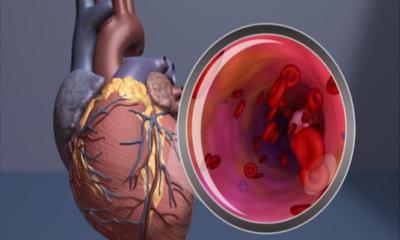News • Dangerous fantasy worlds
Happily ever after? Study explores health risks for Disney princesses
Although Disney princesses seem to lead an idyllic life, they face serious real world health hazards, warn experts in the Christmas issue of The BMJ.
© Raychan – unsplash.com
In their publication, Sanne van Dijk and colleagues call on Disney to consider strategies such as mindfulness and personal protection measures to improve princesses’ wellbeing and help them start living healthily ever after.

© Raamin ka – unsplash.com
Snow White is the “fairest princess of all” yet as a scullery maid for her wicked stepmother, opportunities for social interaction are extremely limited, putting her at risk of cardiovascular disease, depression, anxiety, and early death, explain the authors.
Fortunately, Snow White meets the Seven Dwarfs, who protect her from the dangers of solitude, but then she eats a poisoned apple, highlighting that, for Snow White, the saying “an apple a day keeps the doctor away” fails spectacularly.
Princess Jasmine from Aladdin is also at risk of the health effects of loneliness as she grows up within the walls of her palace with no friends at all, note the authors. Meanwhile, her pet tiger Rajah not only poses a risk of zoonotic infection, its natural instincts could lead to a dangerous and potentially fatal situation.
In Beauty and the Beast, close contact with the Beast also exposes Belle to many potentially life threatening infectious diseases, such as brucellosis or rabies.
Cinderella’s continuous exposure to dust puts her at risk of developing occupational lung disease, which is made worse by the fairy godmother spreading massive quantities of magical glitter - otherwise known as aluminium coated microplastics - that can penetrate human lung tissue, explain the authors. Rather than a prince, they suggest Cinderella needs ongoing respiratory therapy to live happily ever after.
In her drive to bring peace between Native Americans and English settlers, Pocahontas’ hand first cliff dive has an impressive falling time of nine seconds. But with an estimated cliff height of 252 m, the authors warn that such a leap would leave Pocahontas with “a symphony of fractures rather than a harmonious tune with nature.”

© Some Tale – unsplash.com
In Sleeping Beauty, princess Aurora’s “infinite sleep” carries risks of cardiovascular disease, stroke, obesity, and diabetes, while prolonged bed rest is linked to increased risk of pressure ulcers and muscle atrophy. Luckily, Prince Philip almost immediately breaks the sleeping spell by kissing Aurora, though the authors note that he also breaks with current social norms by neglecting to obtain consent.
While Mulan is celebrated as a warrior who saves the empire of China, she repeatedly experiences pressure from her family to uphold their honour. Women facing honour based violence may experience increased levels of mental ill health from being forced into living a life they did not choose, note the authors.
Finally, the authors warn that Rapunzel’s hair follicles are likely to have been damaged from repetitive excessive pulling on her long braid, a condition known as traction alopecia, which can lead to scalp pain, headaches, and permanent hair loss.
“Disney must consider interventions to overcome these health challenges, including mindfulness and psychotherapy, training on cohabitation with animals, and personal protection measures against infectious agents and toxic particles,” they write. “Only then can Disney princesses start living healthily ever after.”
Source: The BMJ
17.12.2024











